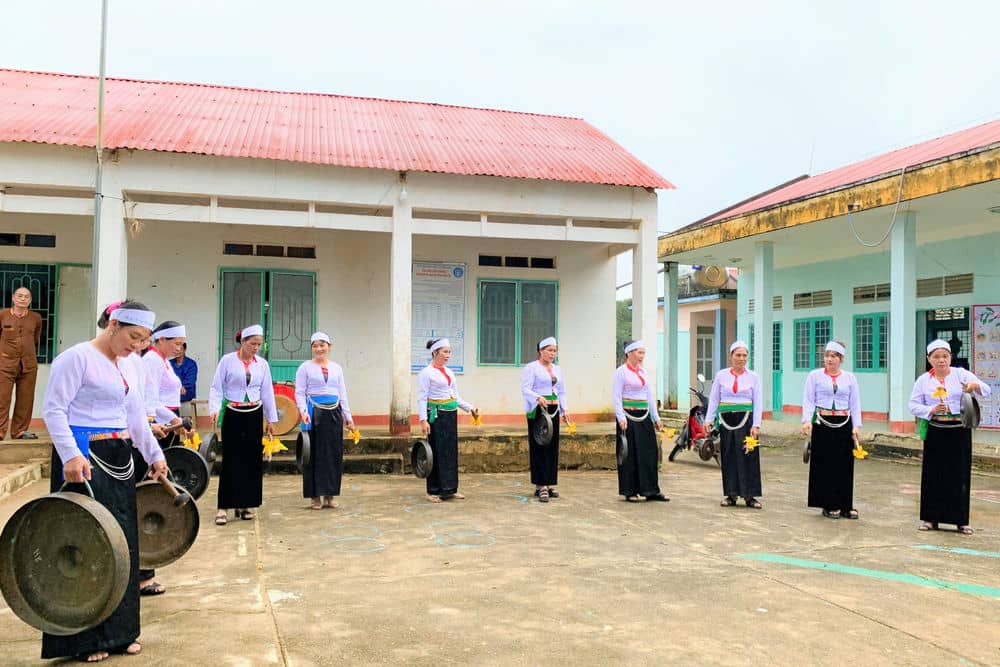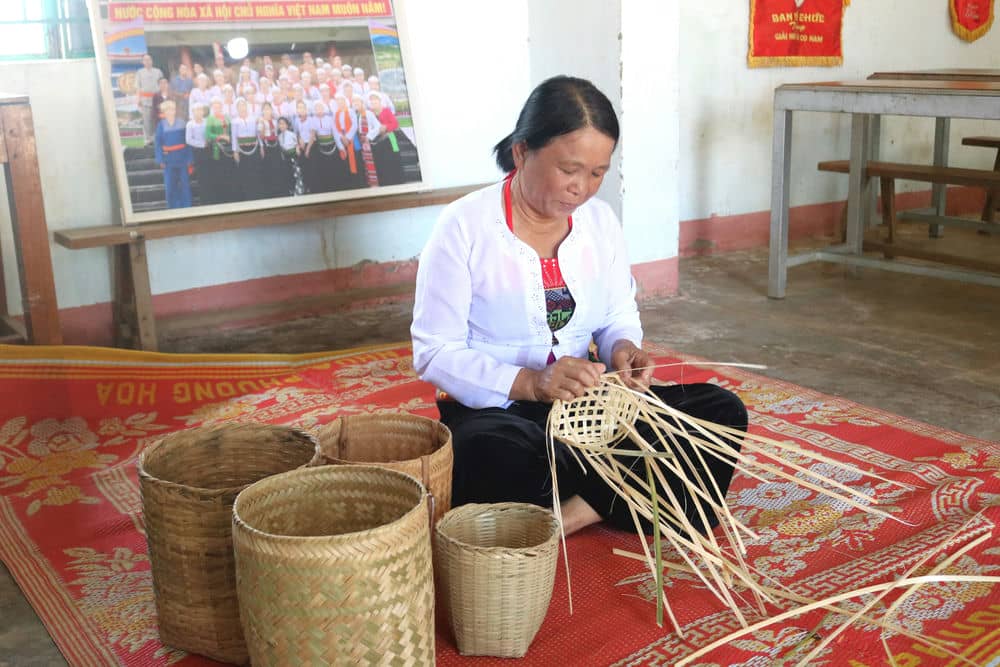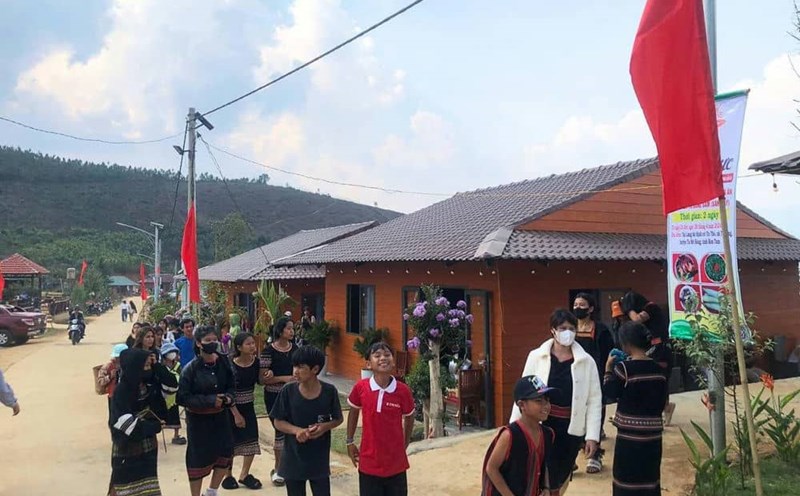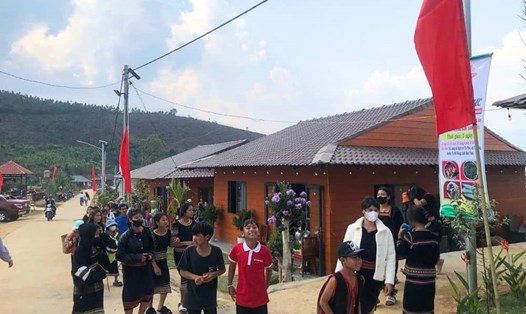Mr. Bui Quang Trieu - Vice Chairman of Dak Kan Commune People's Committee, Ngoc Hoi District said: "For many years, Muong women in the commune have promoted the beauty of ethnic culture, contributing to creating community cohesion and improving the spiritual life of the people here".
In the coming time, Dak Kan commune will coordinate with Muong villages to open classes to teach gong playing and folk singing for the young generation.
In Dak Kan commune, the Muong community has 468 households with 1,446 people, mainly living in Hoa Binh, Hao Phu and Tan Binh villages. Most of the Muong people in the northern provinces migrated to Kon Tum in 1954 and after 1975.

The journey to make a living in the new land was initially full of hardships and difficulties, but the Muong people never forgot the cultural identity of their people.
Muong women still often wear traditional clothes on weddings and festivals; reenact new rice celebrations and summer opening ceremonies; play gongs, dance xoe, and sing folk songs in local festivals.
Ms. Dinh Thi Huong - Head of Hoa Binh village, Dak Kan commune shared: "Now the Muong villages are more spacious, economic and social life has improved a lot. Every day, every week, Muong women and children bring gongs to practice playing in the village yard.
The ringing of the bells helps people feel refreshed, happy and forget all the fatigue of a long day of working in the fields.
Sa Bui Ha Anh (14 years old, in Hoa Binh village, Dak Kan commune) said: “My mother taught me how to play the gong since I was little. The more I get attached to the gong, the more I love the cultural beauty of my people and want to perform more.”

In addition to gongs, Muong women in Dak Kan commune also preserve ancient folk songs. Mrs. Sa Thi Chien (54 years old, in Hao Phu village, Dak Kan commune) is a typical example in preserving Muong folk songs.
Since childhood, when working in the fields, going to the fields, herding buffalo, cutting grass, Mrs. Chien has absorbed deeply into her heart the gentle, soft folk melodies of the Muong people, forever imprinted in her mind. When she got married and traveled thousands of kilometers to the Central Highlands to live, she still did not forget those melodies and lyrics.
Mrs. Chien always reminds her children and grandchildren to preserve the language, writing, and unique art forms of her people, not letting them fade away in the face of modern life.
Because, it is a spiritual culture, when Muong people immerse themselves in the sound of gongs, dances... they forget their daily worries, encourage each other to strive to improve in life.
Every day, Ms. Chien improves her technique and practices singing with the other women in the village to improve her voice. Ms. Chien also opens classes to teach Muong folk songs to many young people in the village, thereby creating a cultural feature that has been passed down for thousands of years.






